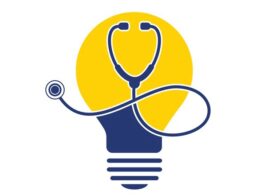HFS Research
Rohan Kulkarni
April 5, 2022
pharmatimes
The Situation:
The advent of various emerging technologies such as artificial intelligence (AI), smart analytics, and blockchain has inspired the rapid evolution of medical technology (medtech).
Medtech has helped expand telehealth use cases connecting consumers and their clinicians virtually and continuously.
The purpose of medtech is to allow technology to monitor consumer physiological attributes and trigger clinical interventions only when required.
The advent of various emerging technologies such as artificial intelligence (AI), smart analytics, and blockchain has inspired the rapid evolution of medical technology (medtech).
Telehealth-enabled care delivery referred to remote patient monitoring (RPM) can do more than monitor patients and alert clinicians.
It can be the default pre-triage approach or a health enabler, ensuring that expensive clinical interventions are employed only when required.
RPM promises to make significant strides toward achieving the triple aim of care in Exhibit 1: reducing overall cost, improving health outcomes, and improving patient experiences.
Telehealth-enabled care delivery referred to remote patient monitoring (RPM) can do more than monitor patients and alert clinicians.
RPM promises to make significant strides toward achieving the triple aim of care in Exhibit 1: reducing overall cost, improving health outcomes, and improving patient experiences.
Exhibit 1: Increasing chronic conditions and faster than inflation rise in healthcare cost is putting the triple aim of healthcare under extreme pressure

Source: HFS Research, 2022
RPM is a recipe for lower-cost enablement of health and care
A variety of factors add the value of RPM to real-world outcomes, accelerating adoption and impacting the triple aim of healthcare.
We’ve identified the top 10 drivers supporting the adoption of RPM:
- Speed: The proliferation of 5G allows healthcare enterprises to transport large amounts of data rapidly, accelerate processing through edge computing, and quickly provide analysis and interventions.
- Reach: RPM helps rural geographies easily overcome access challenges.
- Convenience: RPM facilitates providing monitoring and care where the consumer is.
- Cost: Increasing adoption impacts per-unit costs favorably for devices and associated services.
- Complexity: RPM can address a broad range of conditions across the care spectrum.
- Provider adoption: Changing demographics (younger, tech-savvy), consumer adoption, and increased clinician burnout are influencing clinicians to adopt RPM to augment traditional care paths.
- Chronic condition management: The increasing prevalence of chronic conditions requires continuous monitoring and timely interventions that RPM intrinsically supports.
- Improved health outcomes: Continuous monitoring and effective evidence-based clinical intervention are key influencers of health outcomes.
- Regulatory: Reimbursements and regulations are increasingly supportive of RPM.
- Delivery models: Remote intervention is becoming a critical attribute to care and management across borders.
We’ve identified the top 10 drivers supporting the adoption of RPM:
A multi-dimensional set of favorable conditions is making RPM a no-brainer. Its evolution with maturing technologies and imaginative use cases will be a major driver of the triple aim of care.
Engagement, not experience, enables the triple aim
Protagonists across the healthcare ecosystem have been chasing the mythical “experience” that does not exist.
It does not exist because the fundamental reality of the healthcare experience is that the patient might not find all interactions “positive,” such as a visit to a dentist for a root canal, proctologist for a check-up, or an ophthalmologist appointment requiring eye dilation, regardless of how streamlined and curated the overall interaction is.
Simply put, no one can ever guarantee a positive healthcare experience. What you can guarantee is patient engagement.
Simply put, no one can ever guarantee a positive healthcare experience. What you can guarantee is patient engagement.
Instead, engagement is key to impacting the triple aim in a meaningful way. Effective engagement is continuous connectivity, in sickness and in health, direct and indirect, driving the notion of a health security net.
Engagement is clinical and non-clinical interaction across various states of health and condition complexity (see Exhibit 2).
Exhibit 2: Engagement is reflected in multi-modal interactions driven across status of health and complexity of conditions

Source: HFS Research, 2022
Health or a lack thereof is a point-in-time state, but it is still part of life’s continuum. Consequently, engagement needs to mirror that to make a difference.
RPM is becoming an effective engagement mechanism. Its entourage includes a variety of wearables to capture data, applications to aggregate and analyze data, and services to enable interventions.
As adoption increases, it will have a significant impact on the reduction of unnecessary clinical interventions reducing costs while ensuring timely and required clinical interventions will aid in improving health outcomes.
RPM is becoming an effective engagement mechanism. Its entourage includes a variety of wearables to capture data, applications to aggregate and analyze data, and services to enable interventions
As adoption increases, it will have a significant impact on the reduction of unnecessary clinical interventions reducing costs while ensuring timely and required clinical interventions will aid in improving health outcomes.
The clear opportunity here is for service providers, given there is no curation of the various solutions and services. The disintermediated approach risks diminishing the efficacy of RPM.
The ecosystem is critical to RPM plays
}Actions in the market, whether initial public offerings, mergers and acquisitions, or growth of incumbents, suggest the estimated RPM market value is several tens of billions of dollars with a cumulative annual growth rate (CAGR) between 10% and 20% in the US and globally.
RPM is unleashing new opportunities and attracting different players across the healthcare ecosystem, big tech, and various other interests.
…the estimated RPM market value is several tens of billions of dollars with a cumulative annual growth rate (CAGR) between 10% and 20% in the US and globally.
In an evolving marketplace with changing needs, incoming players need to fit in with a purpose. That purpose could be targeted or holistic, depending on the type of disease conditions they want to address, type of devices, or type of services.
However, companies wanting to engage in this market can’t do it alone. They must have diverse capabilities, possess different market expertise and experiences, and accept varying levels of risk.
All of these must balance the different objectives of the participating companies arguing for an ecosystem-driven approach (see Exhibit 3). The ecosystem will act as a force multiplier allowing for rapid creation of capabilities, speed to market, and hedging risks.
However, companies wanting to engage in this market can’t do it alone. They must have diverse capabilities, possess different market expertise and experiences, and accept varying levels of risk.
Exhibit 3: RPM participants must recognize the target-rich ecosystem of buyers, partners, and suppliers

Source: HFS Research, 2022
The Bottom Line: Service providers (RPM specialists, industry specialists, and as-a-service providers) must expand their value proposition by taking on risk, crafting creative ecosystems, and influencing the triple aim of healthcare in a meaningful way.
The Bottom Line: Service providers (RPM specialists, industry specialists, and as-a-service providers) must expand their value proposition by taking on risk, crafting creative ecosystems, and influencing the triple aim of healthcare in a meaningful way.
RPM is here to stay given it addresses the fundamental premise of keeping consumers and their caregivers in constant contact to allow for situation-defined interventions, a cost effective and healthy approach.
The benefits of RPM (cost, convenience, simplicity) far outweigh the risks (cyber security, data).
The benefits of RPM (cost, convenience, simplicity) far outweigh the risks (cyber security, data).
RPM will require a level of orchestration best suited to service providers while optimizing the expertise clinicians, life sciences, and health plans bring. So, let’s see if they can seize this opportunity.
RPM will require a level of orchestration best suited to service providers while optimizing the expertise clinicians, life sciences, and health plans bring. So, let’s see if they can seize this opportunity.

Originally published at https://www.hfsresearch.com.












